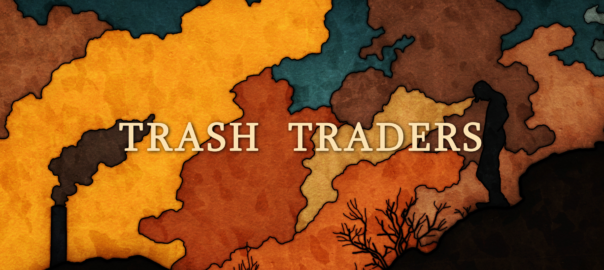In this article I will chronicle the design process and lessons learned in creating Trash Traders a multiplayer iPad game aiming to empower a sustainability mindset.
Introduction
At Carnegie Mellon’s Entertainment Technology Center (ETC) multi-disciplinary teams work on projects over a semester to create an artifact. While attending I was the primary designer on the project which created Trash Traders.
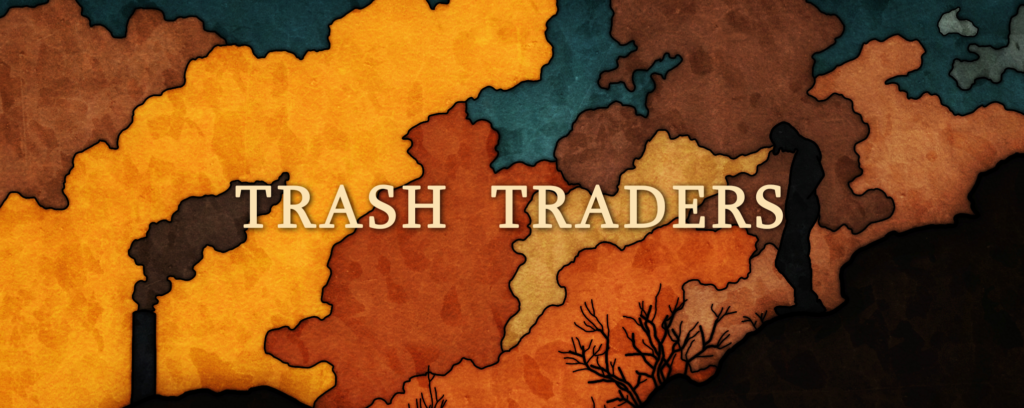
Trash Traders is an iOS app built by a team of students at Carnegie Mellon University’s Entertainment Technology Center in 15 weeks for West Virginia’s Steenrod Elementary. Trash Traders is an experience that has shown to be fun and promote discussions about living a more green life.
Ideation
At the start of development our requirements were up in the air. Following discussions with our client we settled on the following objectives:
- Empowering a sustainability mindset.
- An experience about recycling, reduce, and reuse.
Brainstorming
Our ideation process began with brainstorming based on the objectives of our project, as well as research into existing games.
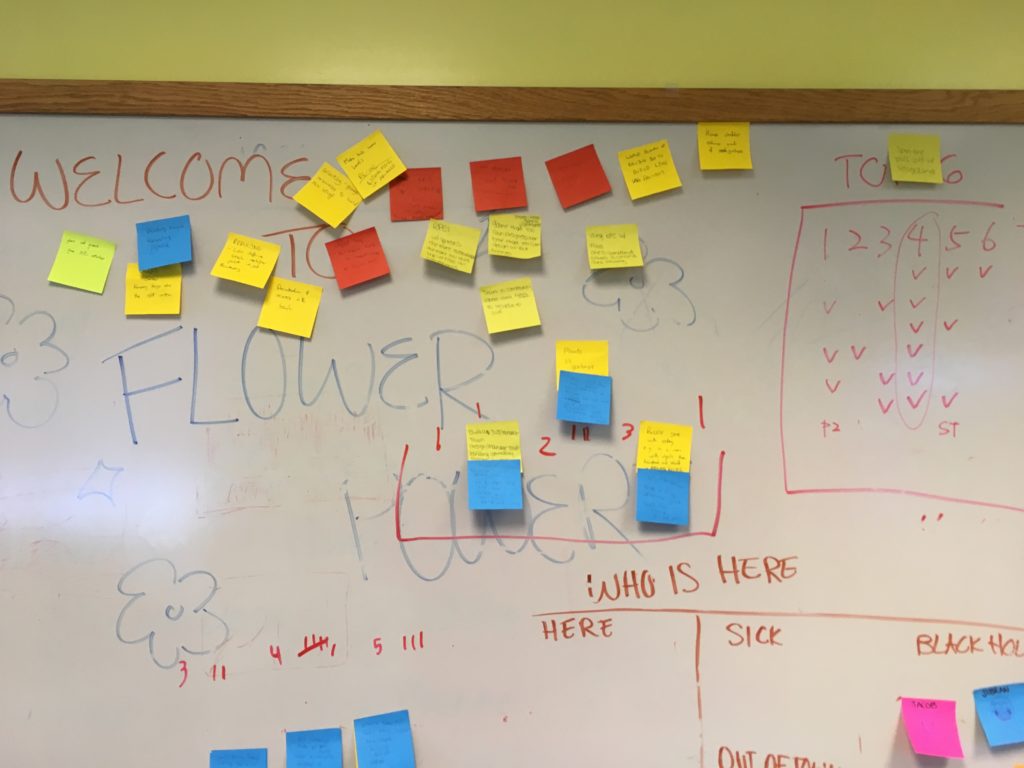
Based on this we created a number of paper prototypes.
Paper Prototyping
We internally playtested these, iterated them, developed new ideas, and prepared art for playtesting.
For our first major playtest we took two paper prototypes, Landfill Hunter and Trash City. Major takeaways from playtests were that players enjoyed:
- The crafting element of Landfill Hunter.
- The action of picking up items in Landfill Hunter.
- Trash City but due to the strategic nature of the game onboarding was more time consuming.
- The social interactions (an aspect the team wanted to harness).
As a result of feedback from playtests additional paper prototypes were developed.
- Filth Fling – The game involved a landfill in the center of the screen which periodically sent to trash to players who needed to flinging trash to each other which could be used to create items with a landfill at the center.
- Trash Crafters – Our previous paper prototype Landfill Hunter had two phases. The first was fishing for trash, the second was crafting using that fished trash. Trash Crafters was derived from Landfill Hunter with a focus on crafting as playtesting suggested players enjoyed crafting.
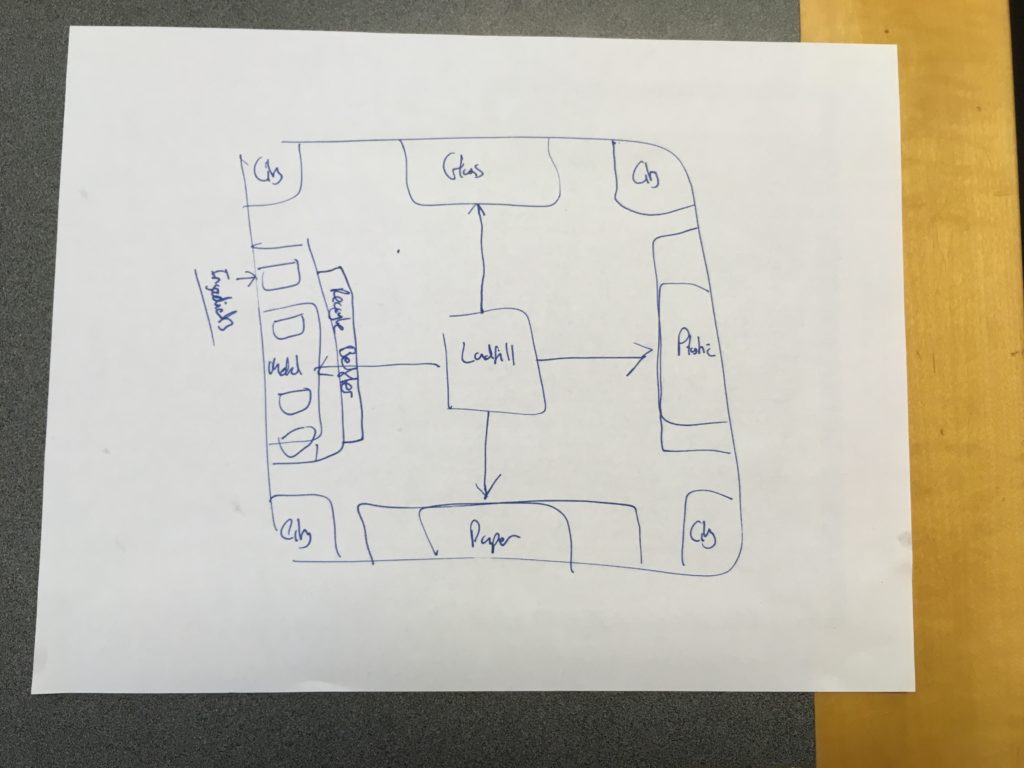
Various changes were made to Filth Fling in order to prepare for the next round of playtesting. Given the short amount of time before another major playtest Filth Fling was developed into a simple game where players had to hand around sheets of paper in time or the pollution in the city would rise.
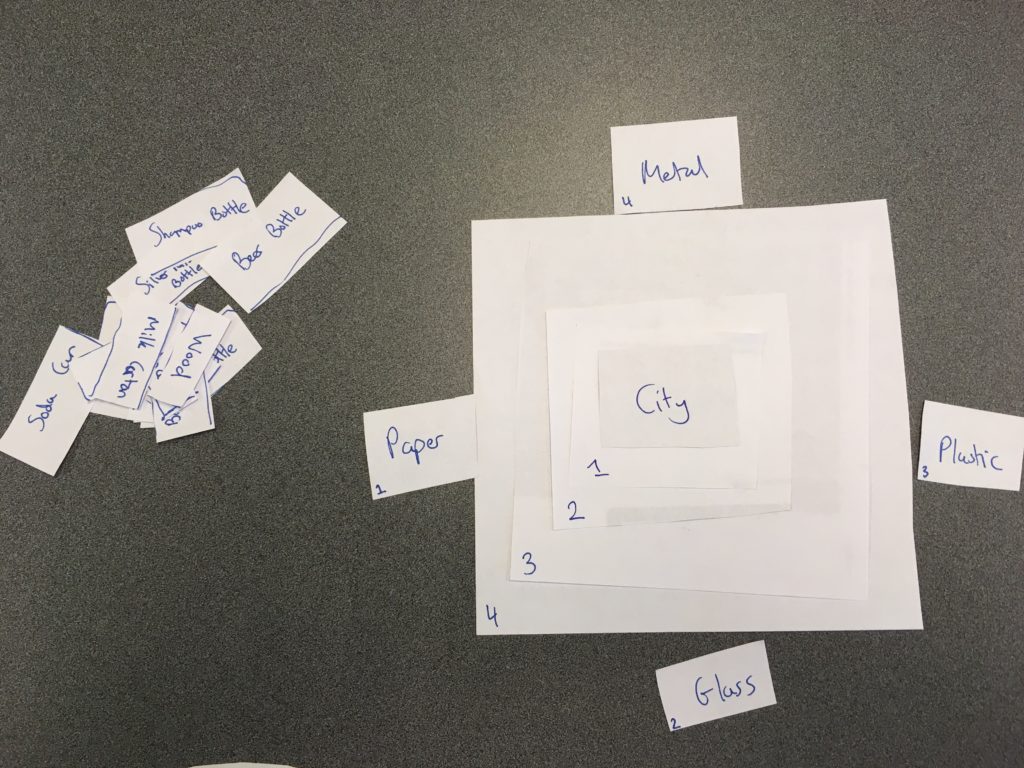
Trash Crafters and Trash City were continued to be iterated on.
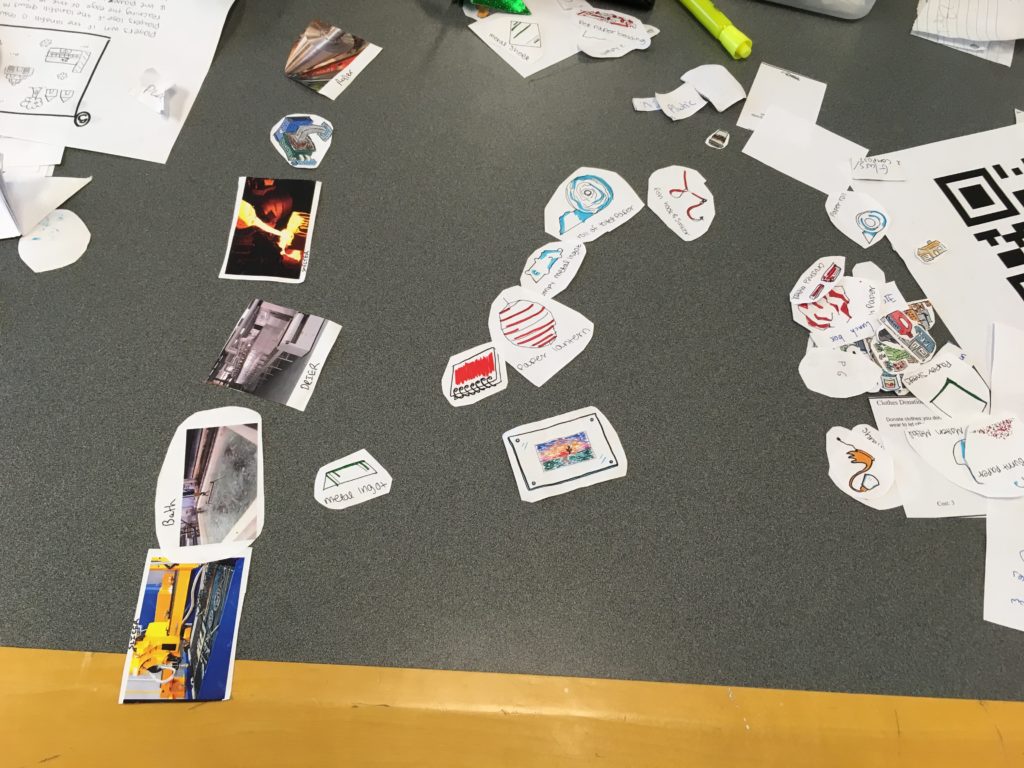
A helpful tool in our ideation process was creating storyboards.
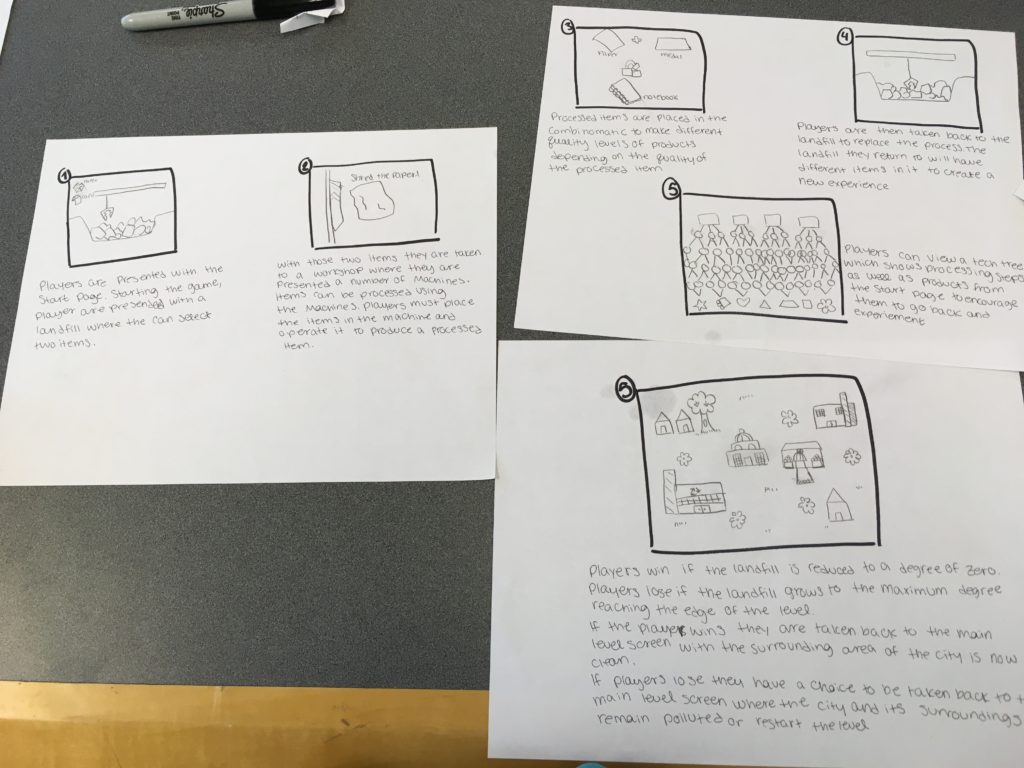
We playtested Trash City, Filth Fling and Trash Crafters with our target demographic. Filth Fling received the best feedback from playtesting hence we chose that to focus on that experience.
Iteration
With a chosen direction we continued to iterate on Filth Fling.
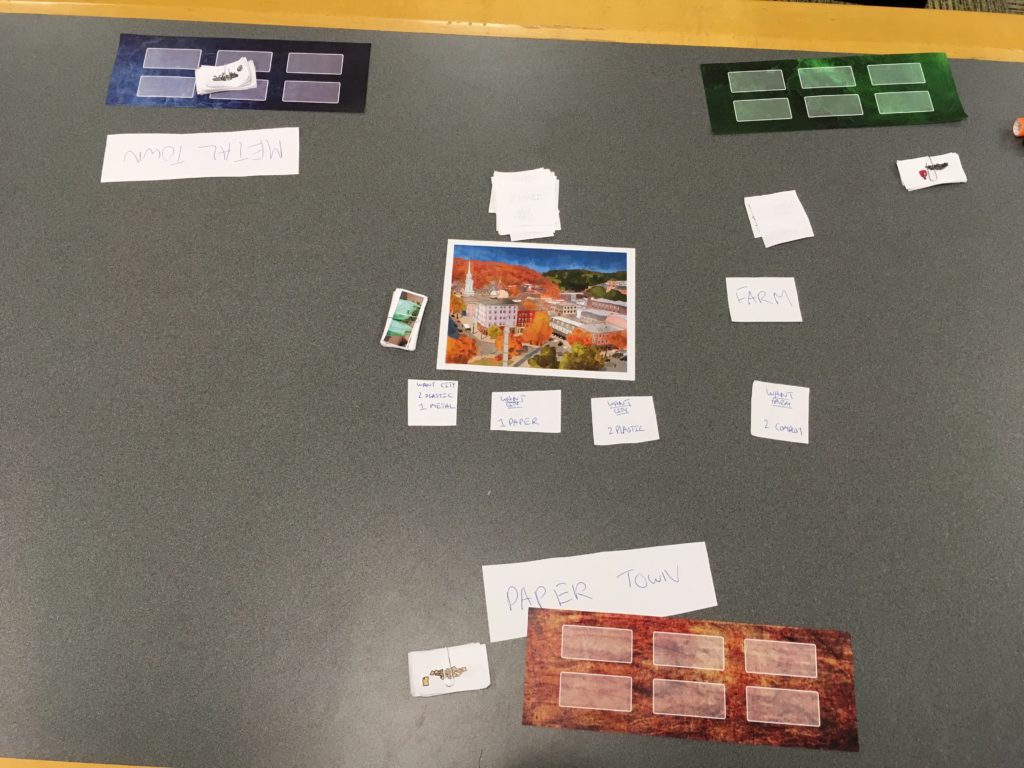
One particular tool that was very helpful was defining transformational goals and design pillars
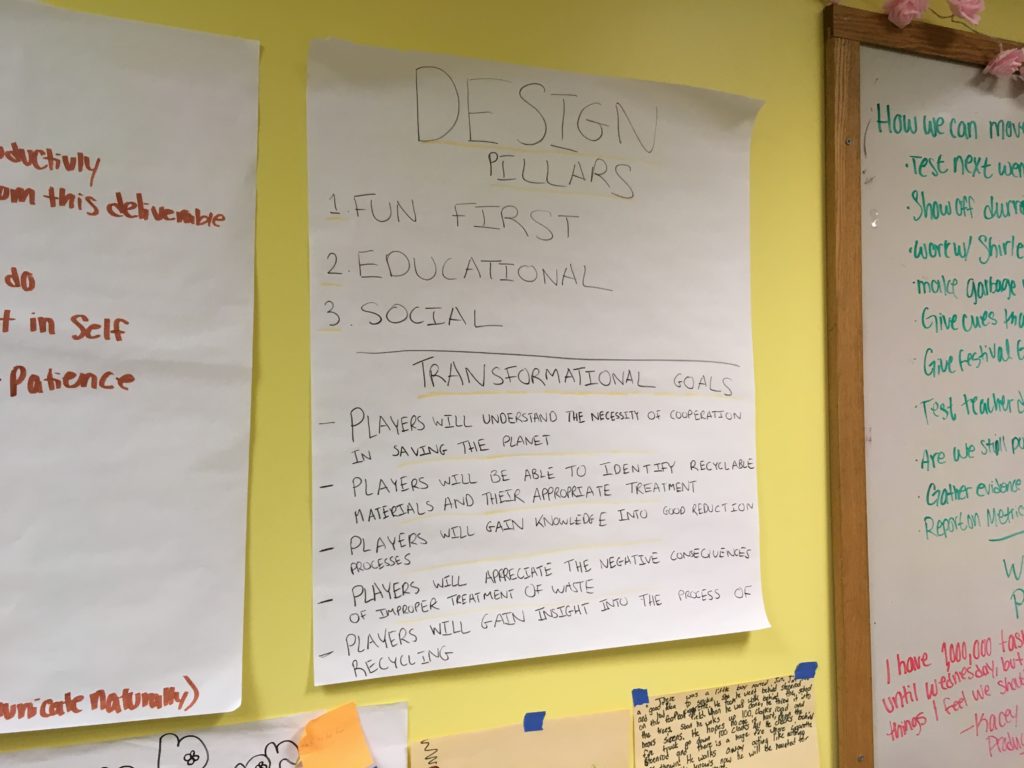
The design pillars we defined as:
- Fun First.
- Educational.
- Social.
The transformational goals we initially defined as players will:
- Understand the necessity of cooperation in saving the planet.
- Be able to identify recyclable materials and their appropriate treatment.
- Gain knowledge into good reduction processes.
- Appreciate the negative consequences of improper treatment of waste.
- Gain insight into the process of recycling.
Additionally we applied a transformational framework to our work to sharpen the design.
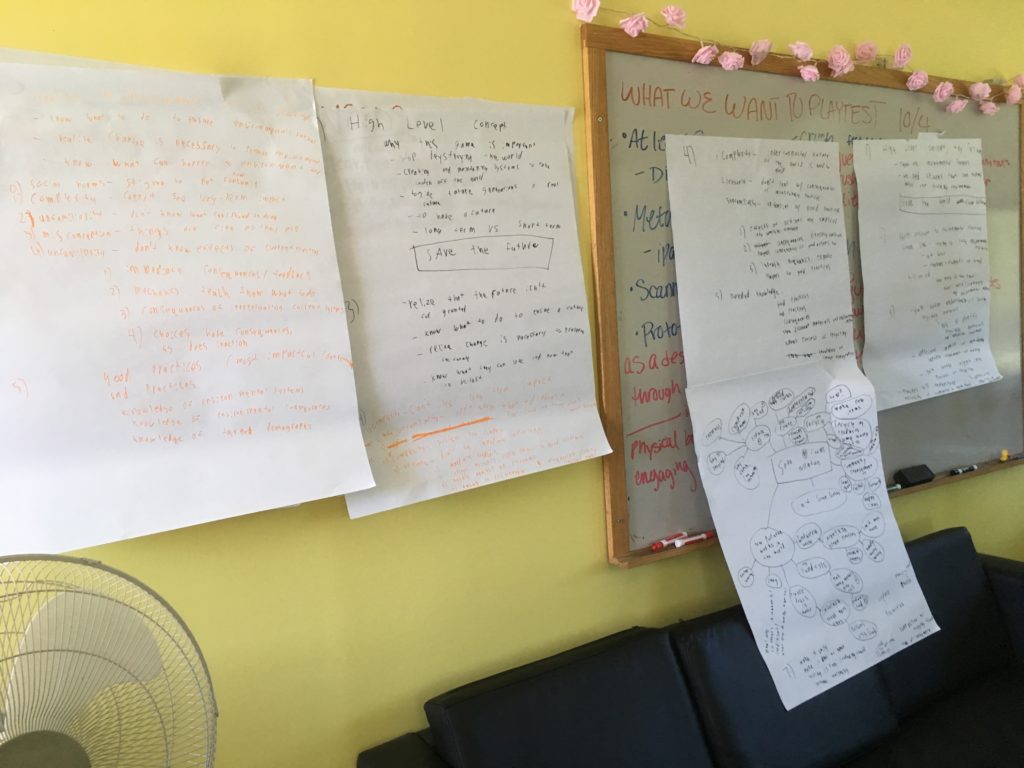
What we developed was Trash Traders. Trash traders combined Filth Fling and Trash Crafters creating a meta-game that had the following steps:
- The ‘City’ randomly distributes trash.
- Players sort the trash sending it to the appropriate player.
- Players then recycle the trash, and create items using a Trash Crafter esque system which can give edict points.
- When enough edict points are gained an edict event occurs. Players then select an option and gain rewards as a result.
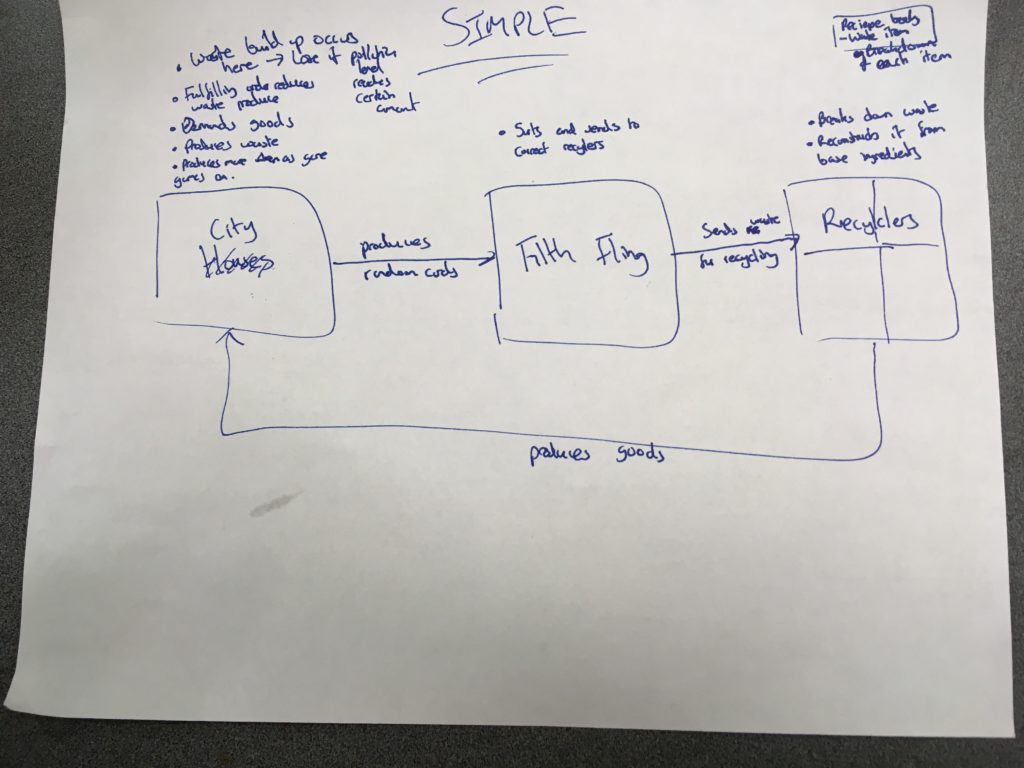
This core concept we developed into a multi-ipad experience. Some changes were made during development namely that the Edict system had to be cut as it was not ready in time, and so as per the original version of Filth Fling creating objects reduced pollution directly rather than an Edict doing so.
User Interface
One of the most laborious tasks in the development of the game was creating a user interface.
In the first version our User Interface (UI) designer proposed two different screens for our UI. One for trading and sorting and another for recycling. After some debate we concluded that it would be better to try keep everything to a single screen. Therefore we changed our UI to have popup menus where possible rather than different screens.
The next major change to the UI was due to a big change in design. We had defined five transformational goals and this was:
- Not a realistic goal given how much production time we had.
- Dilute the focus making it more likely we would create an experience that poorly served all five.
Therfore we reduced the number of transformational goals from five to one. This resulted into a removal of a number of major features. One such feature was recycling. This removal meant a lot more space on our screen. With this space our UI artist created an aesthetic sense to reinforce the idea that pollution is detrimental to the environment.
System Design
Trash Traders had a number of variables that made up the ‘game eco-system’. This system required some balancing. Once a system was setup using XML we created an initial version, and based on feedback found a standard setting.

From our initial difficulty we developed multiple other difficulties. This process was essentially an increase and decrease of 25% in general of these variables. Notable differences between difficulties were:
- Item cards were different as the per the difficulty e.g. easy had mostly 1-2 ingredients. This made it easier to win by yourself in case others were not doing as well.
- Item cards were worth more in easy.
- Trash was dispersed at a slower rate on easy.
- Trash that went to the landfill caused less pollution on easy.
Tutorial
Another major endeavor in our development was to address feedback that the game was good, but too hard to understand. Therefore a large amount of time was spent developing a tutorial.
Version 1 – Paper
The first version of tutorial was paper based.
Version 2 – Slides
This was iterated on into a slide show with pictures and text.
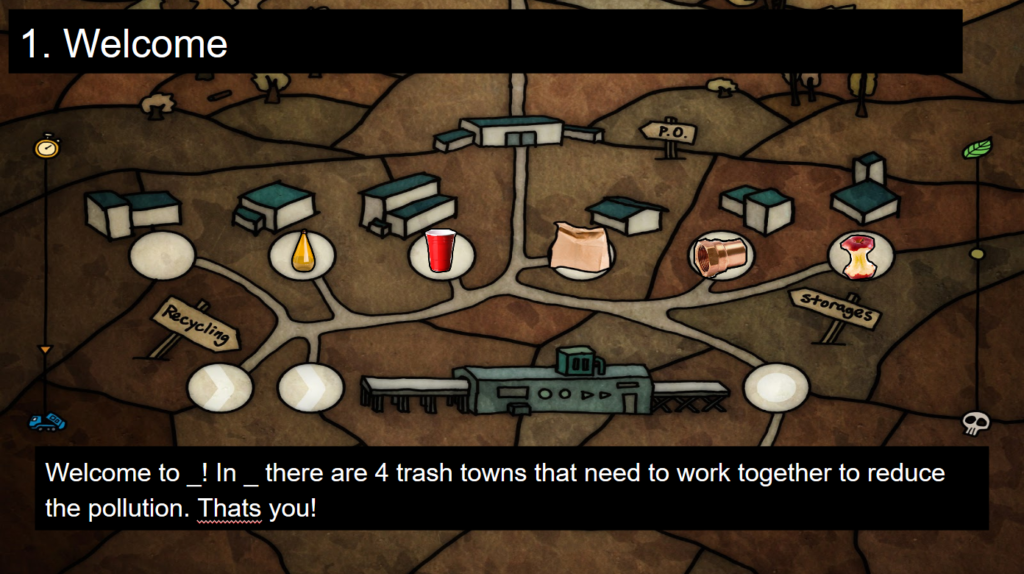
This polished slide based was then playtested. One significant piece of feedback was after sixty seconds of our tutorial playtesters phased out and could remember very little. This feedback prompted us to scrap the tutorial to the bare bones minimal amount.
Version 3 – Slides & Voice Over
Our next attempt was minimal in information and used voice overs. Feedback from playtesting the tutorial was:
- Playtesters didn’t like the voice overs.
- Playtesters also complained the tutorial to be too passive in its presentation.
Responding to this feedback we removed the voice overs and decided to make it more interactive.
Version 4 – Interactive
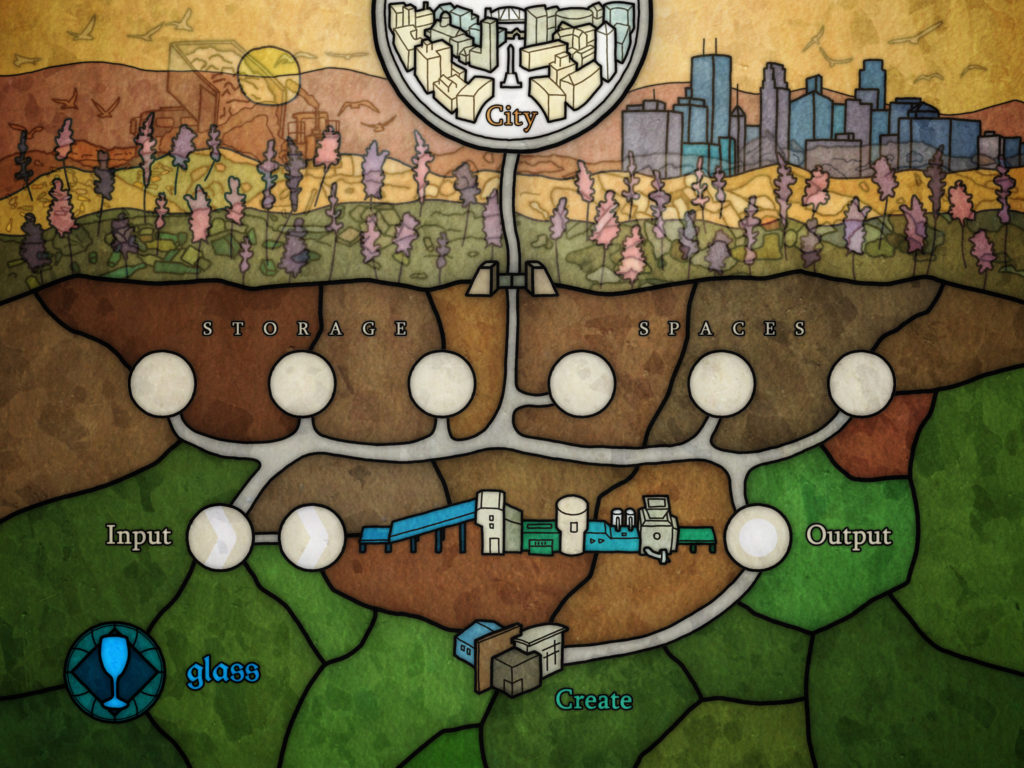
Feedback from playtesting our new interactive tutorial was that people were not understanding that the experience was multiplayer. Therefore we produced additional tutorial material in the form of a tutorial video.
Lessons learned
Ultimately trash traders proved to be a good experience, and there were a number of lessons learned:
- Strategy games are not as popular with the demographic 4-5th graders.
- Paper prototype your User Interface!
- Define a minimal number of transformational goals and hit those well! Then and only then consider adding more!
- If you can use a transformational framework earlier do it!
- Tutorials are hard so start work on them early.
- Voice overs in tutorials are annoying.
- Explaining a multiplayer experience with a single player tutorial can only do so much!
- Storyboarding is a useful ideation tool.
- Capturing the concept of reduce in the context of recycling is difficult!
- Use a transformational framework to sharpen the design.
